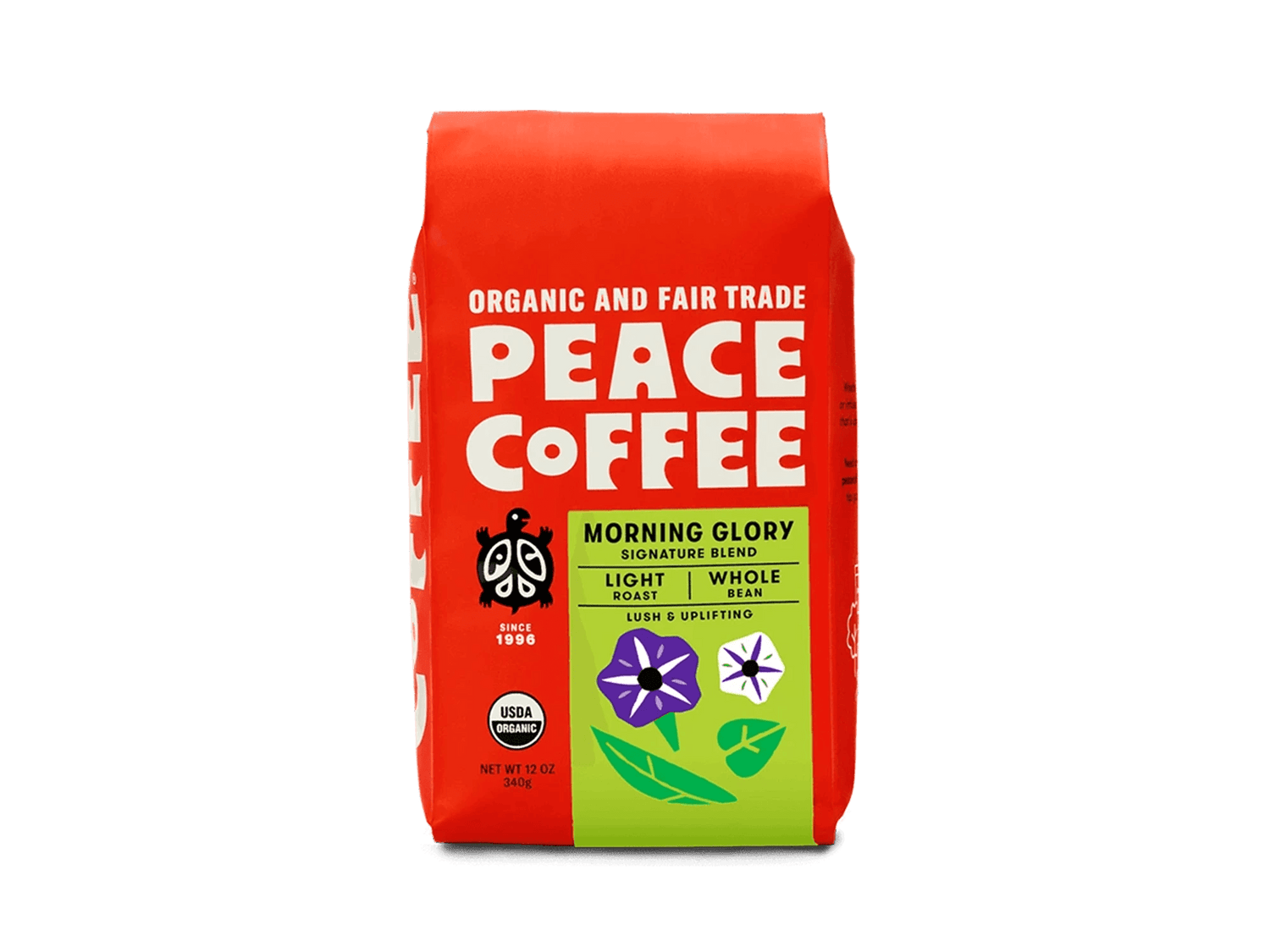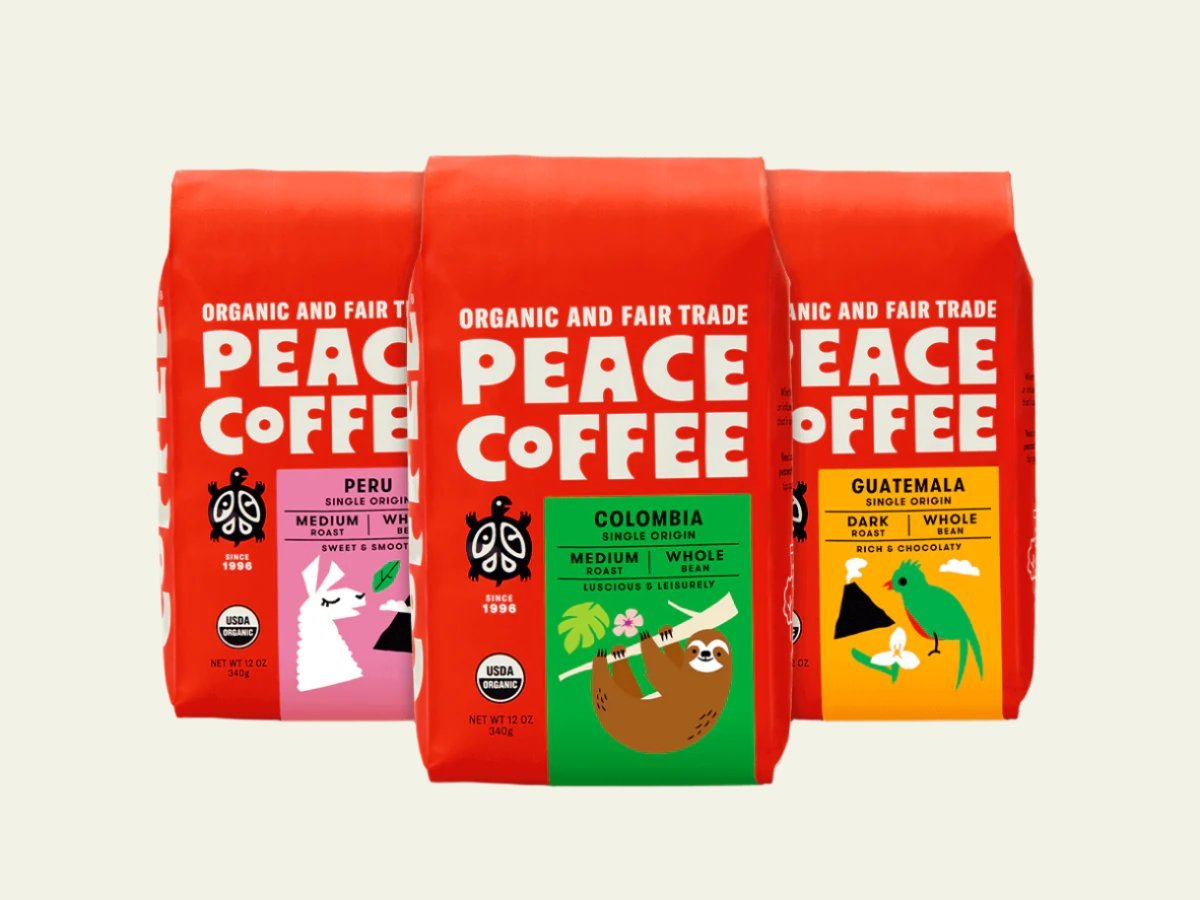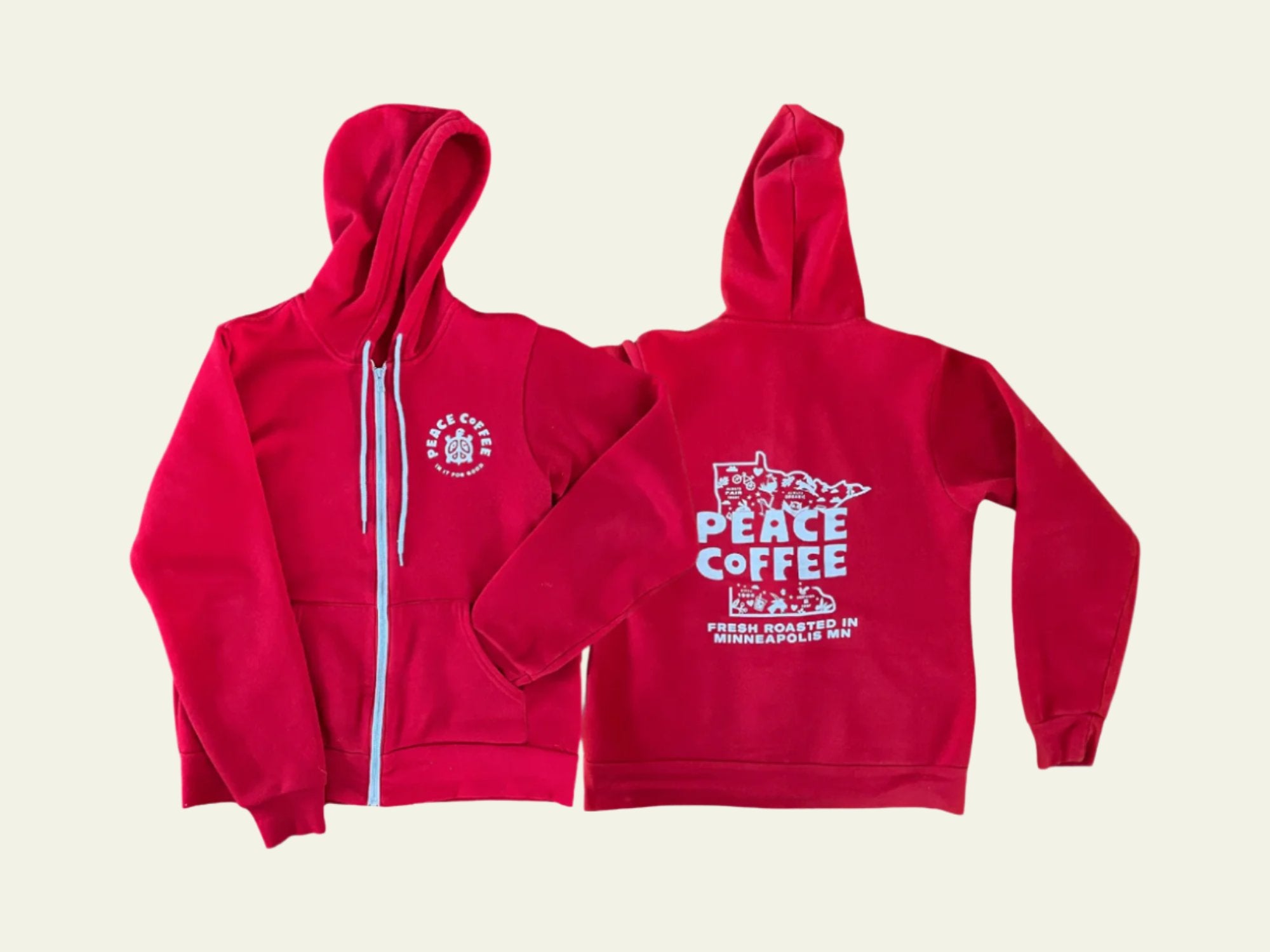Hey, everyone! It’s Amir, Peace Coffee’s Social Media and Marketing Specialist! Earlier this month, I had the absolute pleasure of visiting our friends at the COMSA Cooperative in Honduras, along with several others representing roasteries all over Canada and the United States, and I’m really excited to share more about it!
The first thing you have to know about COMSA is that they are a world-class coffee cooperative. Being that this was my first visit to a coffee-growing community, I kept hearing throughout my trip that they set the bar incredibly high. They’re a dedicated group of farmers, ecologists, and other experts who tirelessly experiment to push boundaries in order to grow more efficiently while ensuring their practices are what is best for their farms.
How They Do What They Do

Ripe and unripe coffee cherries on Karla Portillo's farm.
At the core of everything they do is a philosophy they call the “5 M’s,” which aims to not only remind farmers about how to be stewards of their land but also inspire them to develop themselves into better community members.
Here are the 5 M’s:
1. Matter
Organic matter like compost and plant residue that enriches the soil with nutrients and structure.
2. Minerals
Naturally occurring elements like volcanic soil or rock dust that boosts plant health without the use of chemical fertilization.
3. Microbiology
Beneficial fungi, bacteria, and other microorganisms that break down organic matter and protest crops.
4. Molecules
The formation of complex organic compounds like amino acids and proteins that arise when soil biology is thriving with help from the previous three M’s.
5. Grey Matter
The farmer’s instinct, creativity, and commitment, underscoring the human element in the process.
I learned very quickly that these pillars of their philosophy are not just buzzwords but they’re truly a way of life. And for me, the inclusion of grey matter as the 5th M highlights that their commitment is not only to developing and shaping farming techniques, but also to developing the farmers, their families, and the community. I got the chance to see so much incredible innovation, from their new state-of-the-art anaerobic fermentation tanks and their experimental lab where they were cultivating fungi as an organic pest control measure, the international school where kids are taught in languages like French and Japanese, their recycling facility where they turn plastic waste and litter into fence posts, and so much more. And all of it showed plainly that COMSA means business.
Coffee Is A Family Business

Third-generation coffee farmer, Karla Portillo.
To understand how the 5 M’s truly come to life, you need not look any further than one of the many farmers we got to meet and whose coffee we personally enjoy at Peace Coffee—Karla Portillo!
Her farm originally belonged to her grandparents, and she’s currently in the process of renovating her home. Also, according to her, she’s able to reinvest in her farm thanks to customers buying her incredible coffees year after year. Her mentality—one where she’s always looking to improve the quality of her coffee and yield on her farm—is one shared by another farmer we visited, Oscar Alonzo. His journey to where he is now was, of course, different than Karla’s, but the common throughline between the two, in my opinion, is that they both are continually looking for personal growth alongside their farm’s growth.
Pedaling Through Difficult Times

Oscar Alonzo on his farm sharing his story.
Oscar’s story is one with deep valleys—he says at one point he even felt suicidal—
but then we found a piece of paper on his farm with a bike drawn on it. It stood out to him as a sign that he needed to pedal on, and then we carried it with him to the US for the Specialty Coffee Association Expo. There, he realized he was not just a coffee farmer but a business person too. When he returned from that trip, he chose to call his farm "Cual Bicicleta" after the metaphor he uses to keep himself moving—the bicycle. He told us that he sees life a lot like riding a bike. If you don’t continually pedal, you can’t stay upright and will fall over. He felt himself struggling to keep himself upright, but after shifting his mindset and making use of innovative composting techniques, he has been able to increase yields and find great business opportunities for himself.
Both he and Karla are just two of the many examples of the hard-working and passionate farmers of COMSA who embody the 5 M’s to the fullest. And the cooperatives’s vision extends far beyond any individual farms as well!
Turning Waste into Fence Posts

Our tour group learning about COMSA's "plastic wood" production at their recycling plant.
Central and South America have big problems with plastic waste and litter, so to manage this non-biodegrable material, improve soil quality by eliminating microplastics, and creating an alternate revenue stream where there would otherwise not be one, the folks at COMSA have invested heavily into a recycling plant where many tons of plastic litter like bottles are sorted, shredded, and turned into something they call “plastic wood”, mainly in the form of fence posts, which they sell. Along with selling the fence posts, when sorting the plastic, they separate out the plastics that is most desirable by other recycling plants for them to sell, allowing them to focus on recycling the plastics that other places would often not bother with recycling because it’s not as profitable.
Again, it’s clear that their commitment to the health of their land is a huge priority, and achieving that while also making a useful and profitable product just adds to idea that COMSA is truely second to none when it comes to making things happen.
Educating The Next Generation

COMSA International School.
Another big example showing the care they have for things beyond just the coffee is the COMSA International School. When I got the chance to visit, I was amazed by how nurturing the environment was for students. The youngest among them were learning in languages like French, German, and Japanese, and that was a huge surprise to me. I learned that these places are all markets in which COMSA is looking to grow in the future, which means their next generation of farmers will need to be fluent in those languages to do business. In fact, on the day I was visiting, I saw a teacher from Japan who was teaching little kids words in Japanese. And some of the older kids also maintained small plots on the schoolgrounds where they grew various vegetables as well, teaching them the importance of good farming practices. The wholistic approach they took to their education really impressed me, and I could tell the kids, including the youngest ones I saw, were also incredibly inspired and motivated by it as well.
COMSA For The Win

Baby coffee trees which will be used in the renovation of the farms of COMSA members.
I feel like there’s so much more I could share about COMSA. From their incredible technological investments like their laser sorter at the dry mill which sorts individual coffee cherries ensuring only the best are processed, to their ambitious project aiming to plant 400,000 trees across all of their farms to improve yields based on research they conduct on their experimental farm, and so much more, COMSA is truely in a league of its own.
If you want to see a highlight reel of some of my favorite moments from the trip, we posted a montage on our Instagram, which you can check out here, and definitely be sure to keep an eye on our social media profiles in the coming weeks and months for tons more content from the trip!
Thank you to our friends at Cooperative Coffees for putting this trip together, and extra special thank you to the staff at COMSA for hosting us!






